Velázquez, Goya, Picasso, Dali – this is the painterly heritage set aside by nine Spanish born, contemporary artists who are exhibiting mainly video pieces, installations and photography at the Herzliya Museum.The title of this show Delimitations – inferring boundaries of different types – neatly binds their contributions together.
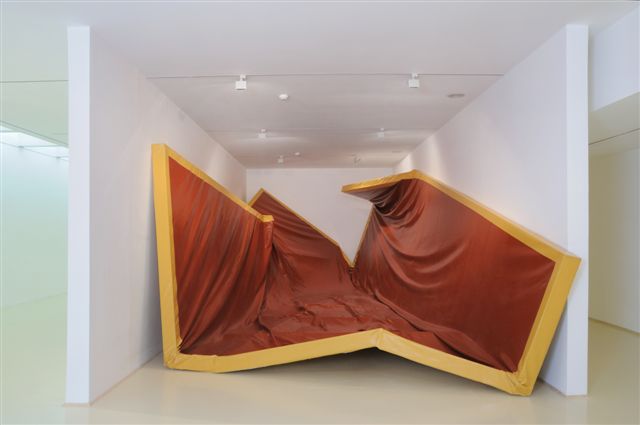
Angela de la Cruz‘s monochromatic painting shuns a classical approach. Instead, she has liberated her work from its flat support to cross the boundary into sculpture. The result is a huge crumpled three-dimensional object squashed between two walls, begs to be held or touched.
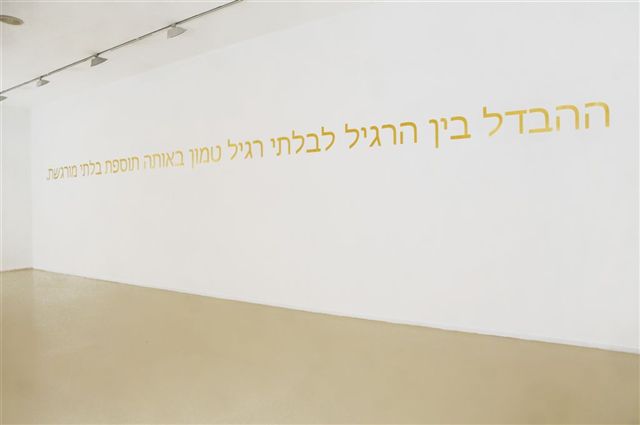
Dora Garcia, who represented Spain’s at the 2011 Biennale in Venice, is showing an intriguing installation that can, like many of the works in this show, be classed as message art. Taken from her Golden Sentences series it consists of a ‘wise’ saying or parable reduced to a one line slogan which she has inscribed in Hebrew on the wall. In translation, the sentence reads: The difference between Ordinary and Extraordinary lies in that Something Extra.
Garcia chooses to use gold paint for her lettering, a material associated with the ornament of religious manuscripts. As a result, the words appear to glow with a divine aura. But, in fact, the sentence she offers us is at once serious and superficial. It can evoke two very different reactions. Some people may want to think about this slogan as it applies to their own lives; others may reject it as being trite or irrelevant.
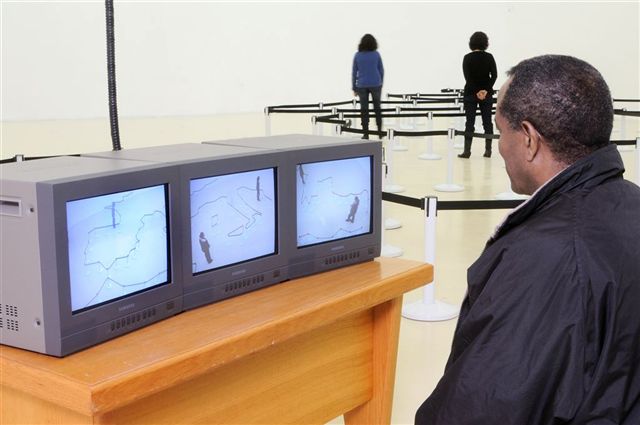
Many of these artists interact with the realities of everyday life. One impressive piece is Mateo Maté’s Restricted Area. Sited in the museum’s largest hall, it comprises a cordoned-off space with surveillance cameras and a uniformed guard. The shape of this delineated area (seen particularly well from above on the screens at the entrance) marks out the geographical boundaries of the countries of Europe. This is a work that relates most effectively to topics pertinent to our lives, such as the the fear of attack from outside to Big Brother’s intrusion into our private lives.
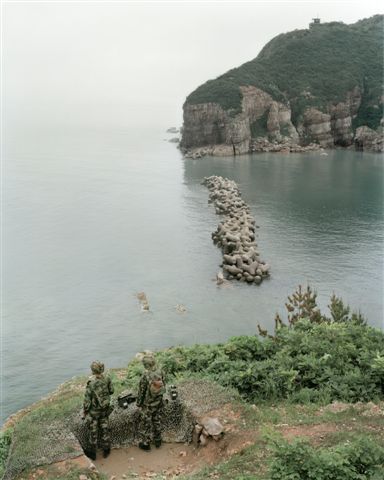
Man’s relationship with Nature is highlighted from an unusual perspective by Gerardo Custance’s Yellow Sea, a photo series shot on the tense maritime border between North and South Korea. At first, seen from afar, one gets the impression that one is looking at idyllic views of beaches and water. But up close, this proves to be an illusion. Soldiers and military fortifications have infiltrated this beautiful place ruining its beauty. This is a fine example of a trend in contemporary photography that focuses on traces and signs in landscape that define life today.
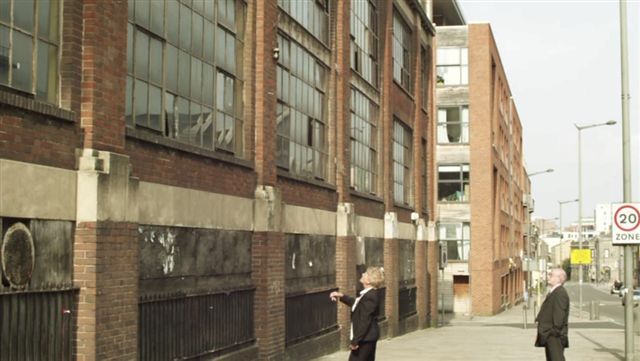
Accepted standards – boundaries – of behavior are breached in a humorous video piece by Christina Lucas, created first for the 2010 Art Biennale in Liverpool, England. Once a major industrial city, it is now best known as the birthplace of the Beatles. Music inspired by this group provides the background for Lucas’ film which is staged in slow motion. One by one, well-dressed, elderly people are seen walking down a city street, then suddenly they turn and throw stones at the glass frontage of an abandoned commercial building. They then continue on their way. Friends and passersby’s applaud and smile at their actions.
This is a 13 min. long video, but it is essential to stay to the end, since the punch line is here. It turns out that the windows have not been shattered at random, the empty panes of glass left at the conclusion of this film spell out the words Touch and Go – a phrase that alludes to the precarious situation of many of the city’s workers, dependent for their livelihood on factories and businesses staying open. This expression of anger at the authorities, the government etc. by normally docile citizens is something that people everywhere can relate to. In fact, all the works in this admirable exhibition have universal significance. These artists may be Spanish by origin but their outlook is global.
Also participating in this exhibition which was curated by Ghila Limon are Carlos Bunga, Carlos Irijalba, Fran Meana and Isabel Rocamora.
This exhibition was made possible thanks to the generous support of: The Spanish Embassy in Israel, Acción Cultural Española AC/E, Instituto Cervantes Tel Aviv and BI ARTS, a British Council initiative in partnership with the Israeli Ministry of Foreign Affairs and the Ministry of Culture and Sport.
Herzliya Museum of Art, 4 Ha’banim St., Herzliya





